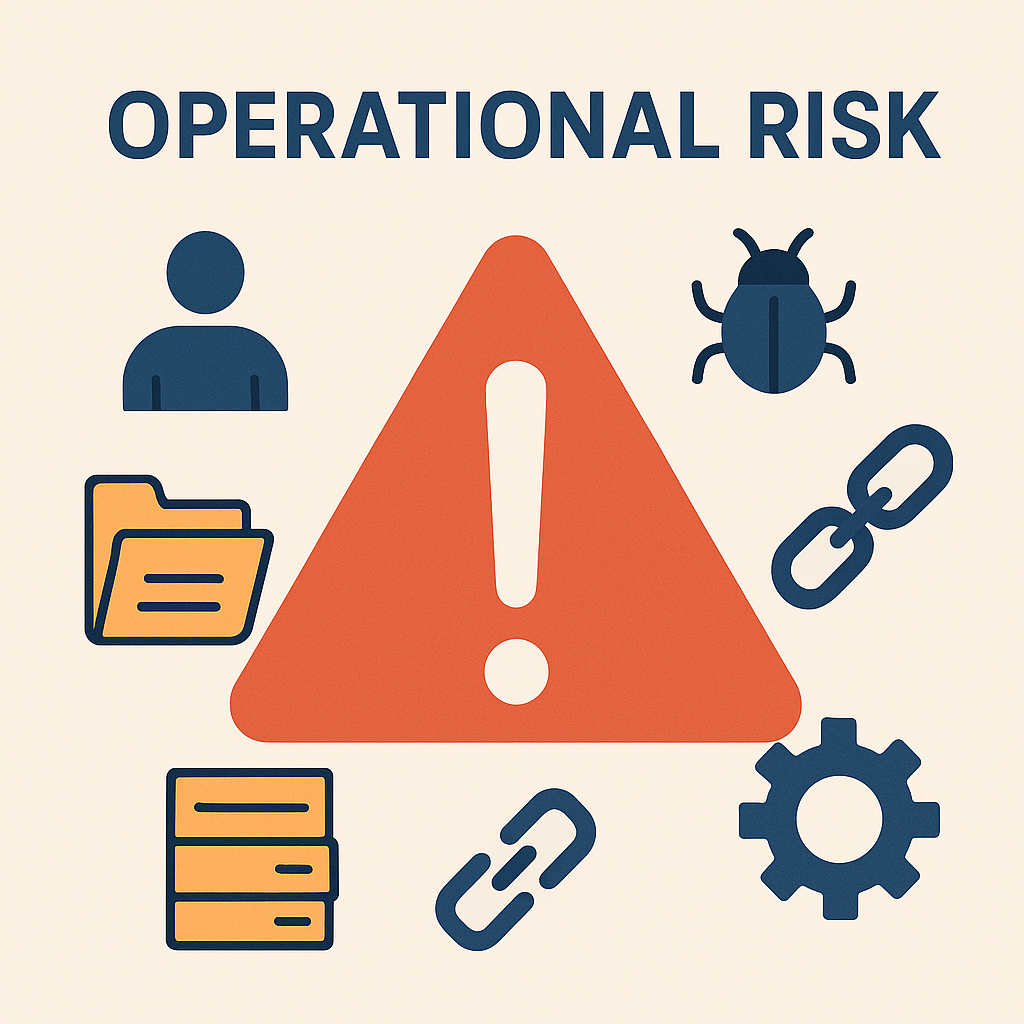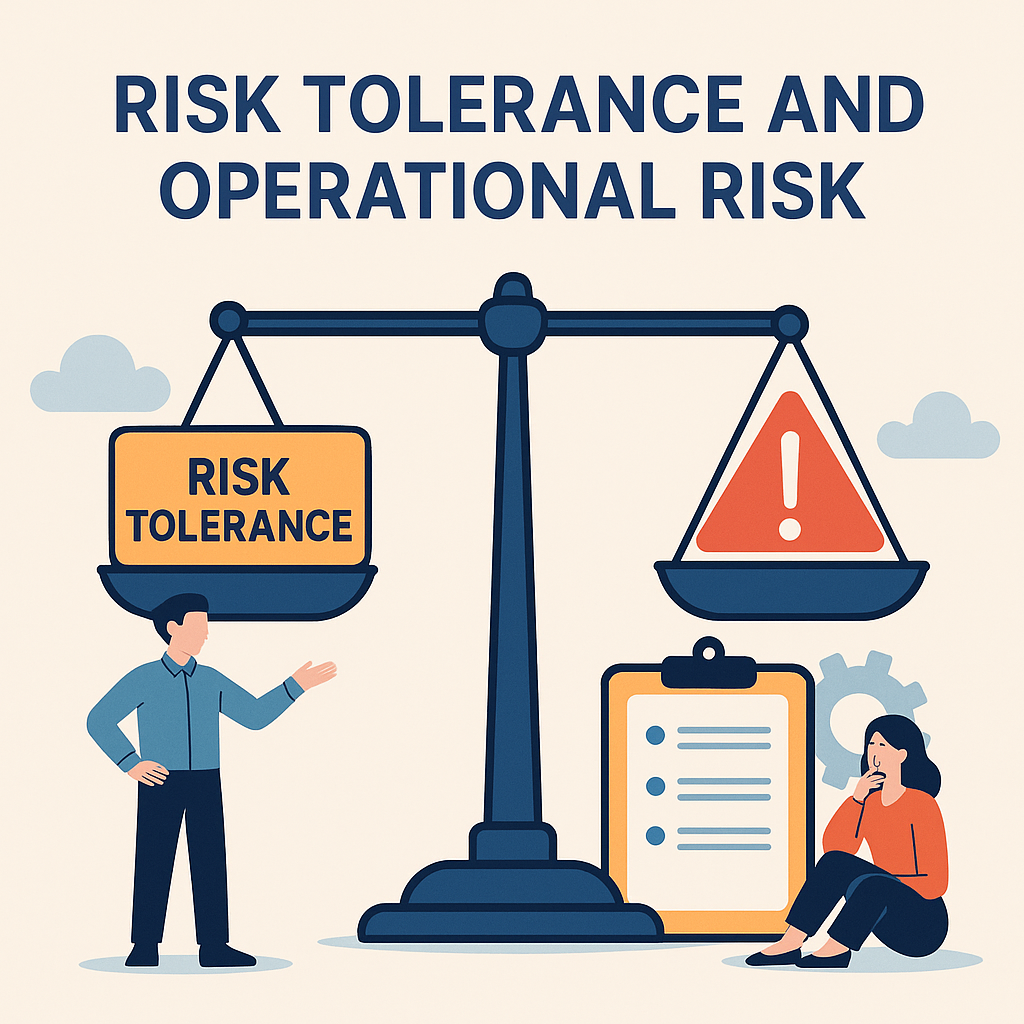Every business—whether a global corporation or a local bakery—faces risks. But not all risks are equal, and not all businesses respond the same way to uncertainty. That’s where the concept of risk tolerance comes into play, especially when managing operational risk, one of the most complex and unpredictable types of business risk.
In this blog, we’ll explore what risk tolerance is, how it relates to operational risk, and why understanding this relationship is essential for effective business management. We’ll also break down practical examples and end with helpful references to dive deeper.
What Is Risk Tolerance?
Risk tolerance is the level of risk an organization is willing to accept in pursuit of its objectives. It’s a strategic decision made by leadership and often reflects a mix of factors such as organizational culture, financial strength, industry volatility, and stakeholder expectations.
Think of risk tolerance as a boundary line. Crossing it could mean damage to your reputation, financial loss, legal exposure, or even business failure. Staying too far below it might mean missed opportunities, stagnation, or inefficiency.
For example, a fintech startup might have high risk tolerance and be comfortable launching products with minimal testing, while a government-run utility might operate with very low risk tolerance due to safety and regulatory concerns.

What Is Operational Risk?
Operational risk refers to the potential loss resulting from failed internal processes, people, systems, or external events. It’s a broad category that includes everything from employee fraud, system outages, and cyberattacks to natural disasters and vendor failures.
Unlike market or credit risk, operational risk is internal and often unpredictable. It’s not just about what goes wrong—but also how prepared an organization is to respond when it does.

Common sources of operational risk include:
- Human error (e.g., incorrect data entry)
- Technology failure (e.g., server downtime)
- Internal fraud (e.g., expense manipulation)
- Regulatory non-compliance (e.g., missed filings)
- External events (e.g., pandemic-related disruptions)
The Link Between Risk Tolerance and Operational Risk
Why This Relationship Matters
Understanding how much operational risk a company is willing to tolerate is essential to crafting policies, setting controls, and designing business continuity plans. If your organization is risk-averse, you might invest heavily in redundant systems, staff training, and compliance. If you have a higher tolerance, you may accept certain inefficiencies or potential losses in favor of speed or innovation.
Example: A Logistics Company’s Response to System Downtime
Let’s say a logistics company relies on a routing software to plan deliveries. If their risk tolerance is low, they might have a backup system, real-time monitoring, and manual processes ready. If their risk tolerance is high, they may accept occasional downtime and prioritize cost savings over backup investment.
In both cases, operational risk exists—but the treatment depends on how much risk the company is willing to accept.
Establishing Risk Tolerance for Operational Risk
- Align with Strategic Goals
A tech company focused on innovation might tolerate higher operational risks to bring new products to market quickly. A hospital, by contrast, cannot afford such risk due to its life-critical operations.
- Consider Stakeholder Expectations
Boards, regulators, customers, and even employees influence how much operational risk is tolerable. For example, data privacy expectations in financial institutions are far stricter than in e-commerce startups.
- Use Quantitative and Qualitative Measures
Risk tolerance is often expressed in measurable terms: acceptable number of incidents, maximum dollar loss, or service-level downtime. It can also be qualitative: “zero tolerance for regulatory non-compliance.”
Risk Appetite vs. Risk Tolerance: What’s the Difference?
Though often used interchangeably, risk appetite and risk tolerance are different:
- Risk appetite is the general level of risk a company is willing to accept.
- Risk tolerance is more specific, defining acceptable risk levels in particular situations or operations.
Think of appetite as your general preference for spicy food, and tolerance as how much chili you can handle in one meal without burning out.
Also read, Risk Appetite vs. Risk Tolerance: Key Differences & How Businesses Can Manage Risks Effectively.
Practical Tips to Manage Operational Risk Within Tolerance
- Perform regular risk assessments to identify and prioritize operational risks.
- Define clear thresholds for what constitutes acceptable vs. unacceptable risk.
- Use internal controls like approvals, audits, and segregation of duties.
- Automate monitoring systems for real-time alerts on key operational risks.
- Educate employees about what risk tolerance means and their role in upholding it.
Real-World Example: Risk Tolerance in Banking
Banks must balance risk-taking (e.g., issuing loans) with strict compliance requirements. A bank might tolerate occasional customer service delays but have zero tolerance for data breaches or regulatory lapses. As a result, it may invest in robust cybersecurity and compliance systems, even if those slow down innovation.
Why It Matters More Than Ever
In today’s fast-moving and digital-first world, operational risks are evolving rapidly—from AI model failures to third-party dependencies. Organizations that define and communicate their risk tolerance clearly are better positioned to make consistent, informed decisions—even during a crisis.
Risk tolerance isn’t just a boardroom concept. It’s a daily guide for how people, processes, and systems should behave under uncertainty.
Conclusion
In an increasingly uncertain and interconnected world, understanding the relationship between risk tolerance and operational risk is not just a compliance checkbox—it’s a strategic advantage. Organizations that clearly define how much operational risk they’re willing to accept can better allocate resources, respond to disruptions, and maintain stakeholder confidence. Whether you’re managing a startup or steering a multinational enterprise, your ability to align operational decisions with your risk tolerance sets the foundation for long-term resilience and success.
References
- Basel Committee on Banking Supervision: Principles for the Sound Management of Operational Risk
- COSO – Enterprise Risk Management Framework
- Harvard Business Review – Managing Risks: A New Framework
- GRC 20/20 – Understanding Operational Risk








